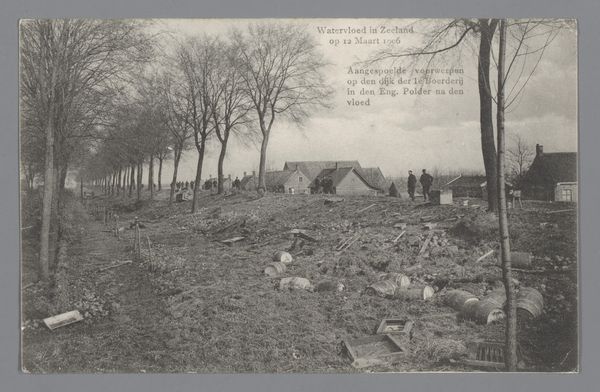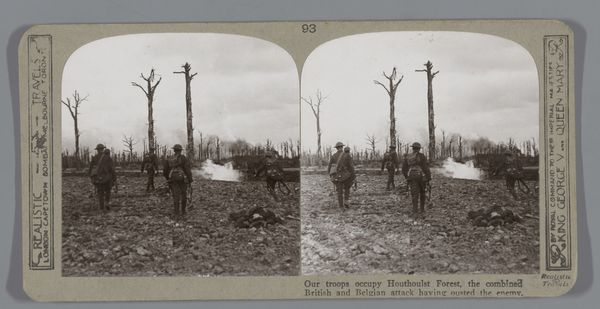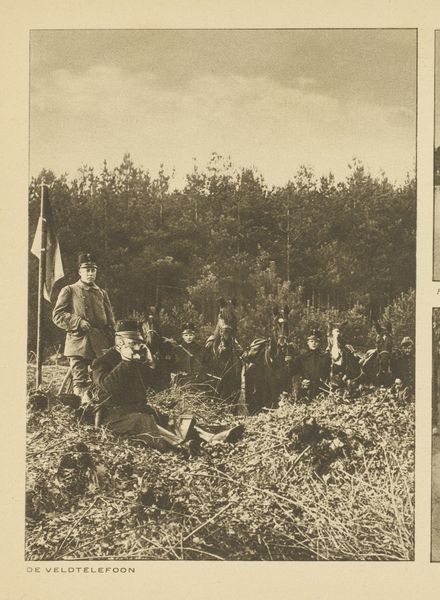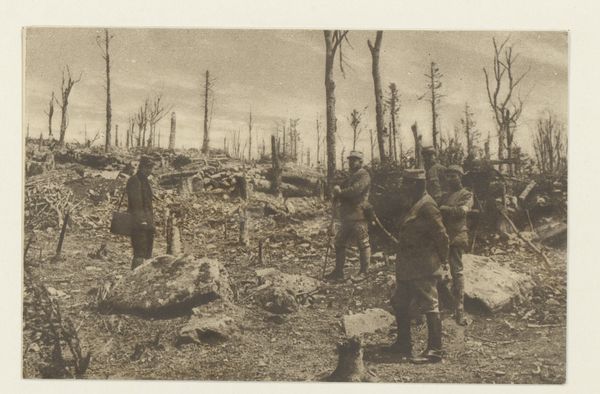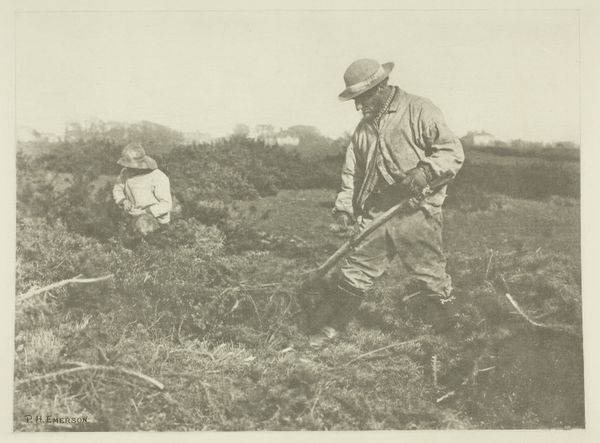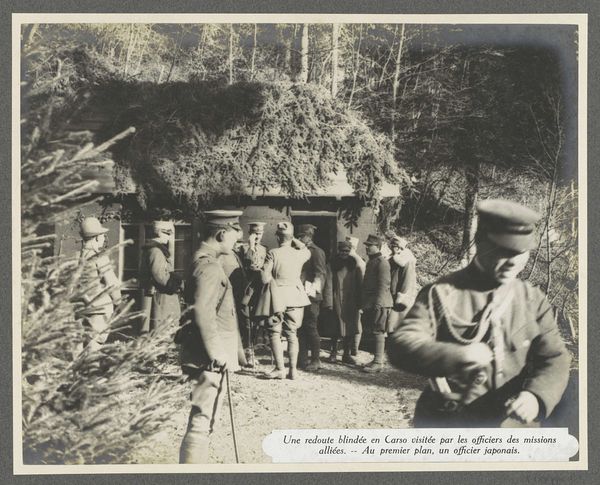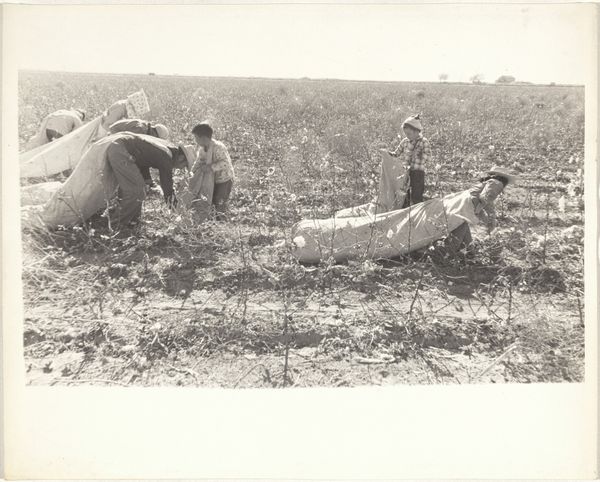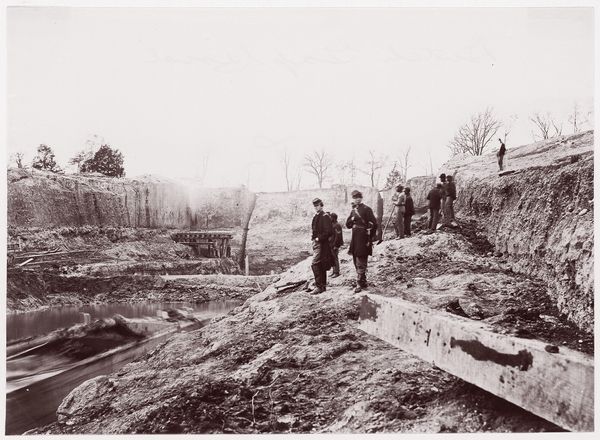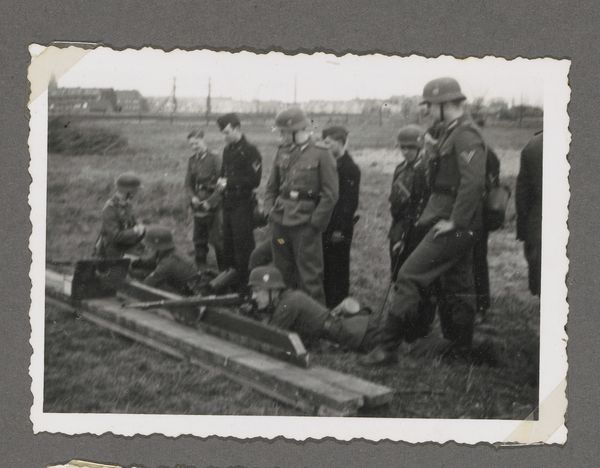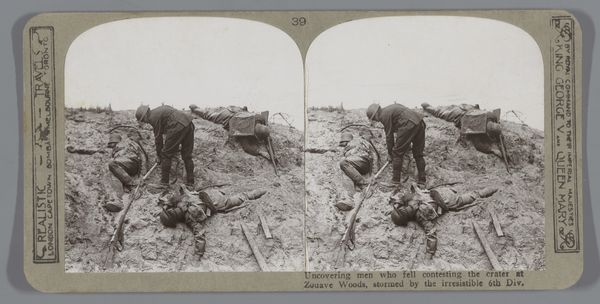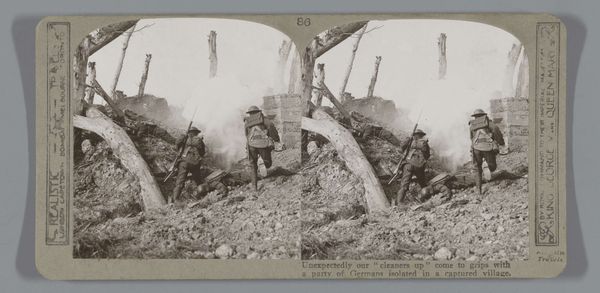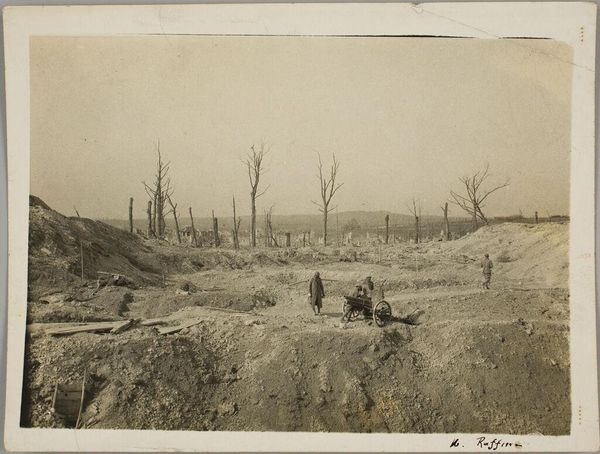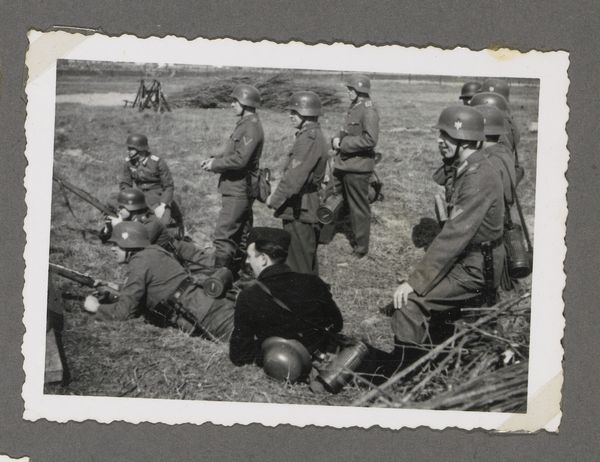
Dimensions: height 9 cm, width 14 cm
Copyright: Rijks Museum: Open Domain
Curator: Here we have "Watervloed in Zeeland," or "Flooding in Zeeland," a photograph taken in 1906 by the brothers Van Straaten. It captures a scene in Zeeland after the flood of that year. What are your first thoughts? Editor: My initial impression is bleak. The black and white tones contribute to a sense of devastation, even emptiness. The bare trees emphasize the starkness of the landscape. I also find the human subjects interesting. Curator: It's an important historical document. It shows us the immediate aftermath of the flooding on March 12th, 1906. This event had a huge impact on the province and the lives of those residing there. The ladder and tool shed signal resilience and a human capacity for adaptation, right? Editor: Precisely. Also note the way those bare trees seem to guard a secret or bear silent witness, perhaps representing both vulnerability and persistence. It is fascinating how quickly our culture adopts motifs for human strength to project those ideals into environmental concepts, and conversely, environmental realities to demonstrate our flaws and the impacts of larger societal problems. Curator: It also points towards an intriguing tension between progress and environmental risk that we continue to deal with today. Consider the polders that reclaimed land from the sea, yet they remained vulnerable. This tension becomes a recurring motif across media that touches on our society's cultural identity. Editor: Agreed, the bicycle for example represents modernity, individual mobility and newfound speed—a break from tradition that must now coexist alongside of the consequences. And then the downed animal near one cyclist? This is symbolic, no doubt, of life's fragility and of this cultural moment when people embraced modernization but still struggled with the consequences of large-scale social and climate events. It reminds us of cycles: disaster, adaptation, reconstruction and resilience—repeated and continuous. Curator: A good point, the photographic medium allowed them to reach wider audiences. I find this work compelling because it freezes an exact time to consider larger cultural themes. The artist clearly meant this photographic moment to represent more than its face-value details, something we must consider with today's environmental problems, as well. Editor: Well said. Looking at it again with those additional insights only strengthens that feeling.
Comments
No comments
Be the first to comment and join the conversation on the ultimate creative platform.
